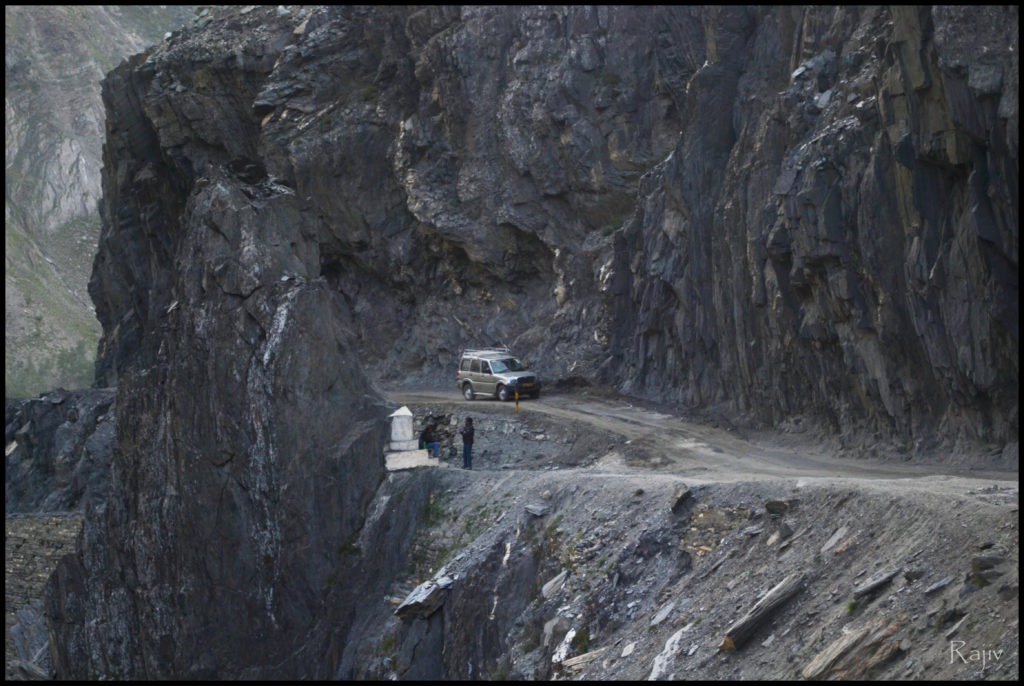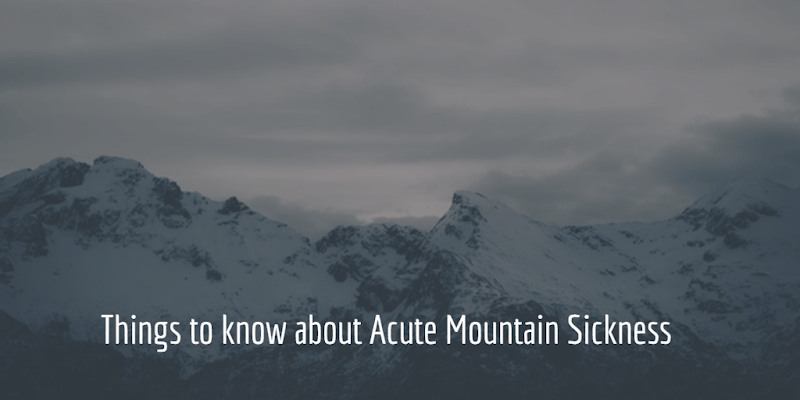Table of Contents
Acute Mountain Sickness Guide – All You Need To Know
In my previous post about how to prepare for Ladakh, I talked about how Ladakh was one of the most extreme places and the things you should know before visiting Ladakh. I had also mentioned that of all the ‘dangers’ that pose a threat to someone visiting Ladakh. Altitude Sickness or Acute Mountain Sickness or AMS is the one thing you really should know well about before visiting Ladakh or any high-altitude destination for that matter. The topic of how to avoid altitude sickness is a big one but I will try to be precise here. So buckle-up and be rest assured that by the time you are on the other side, you will have a clear idea about how to have a safe and wonderful trip to Ladakh.

What is high-altitude?
When you are visiting a mountainous region, you know that with every kilometer you move ahead you are also gaining altitude. But you have been to places like Manali, Shimla, etc. before and you have never been bothered about AMS, then why now? Well, that is because you have not really been to heights which are at a ‘high altitude’. To be considered at high altitude — the height at which the effects of lack of oxygen in the air starts showing – up in the human body — you have to be at a height of at least 8,000 feet (2,348 meters). Most people can easily go up-to this height without much discomfort or problem. However, anything beyond that and up to 18,000 feet can be dangerous to many and is called very high altitude. Anything beyond 18,000 feet, extremely high altitude.
What are the symptoms of Acute Mountain Sickness or AMS?
The symptoms of Acute Mountain Sickness start showing up soon after you have moved to a higher altitude. The symptoms vary depending upon how bad one is affected by AMS. Having said that, the basic symptoms to keep an eye open for are the following:
- Loss of appetite
- Nausea
- Lightheadedness
- Rapid heart-beat
- Feeling exhausted
- Mild headache
- Dizziness
While these symptoms by themselves are not dangerous, they can turn life-threatening within a matter of hours. if you don’t go to a lower altitude quickly enough (more on that below).

Severe symptoms of Acute Mountain Symptoms
If the symptoms mentioned persist even after more than a couple of hours after you have reached a high-altitude destination and proper rest but not progressing you can just stay put and let your body acclimatizes. However, if you find yourself struggling more and more and have started to find it difficult to breathe coupled with other symptoms like coughing, inability to walk in a normal way, rush to a nearby hospital. Hospitals in Leh are well-equipped to handle cases of mild to moderate AMS. If you still don’t get better, the hospitals would suggest you rush to a lower altitude. If they do, don’t even have any second thoughts about it, rush to somewhere lower.

How do I keep AMS away?
The the most important way to try to keep AMS away is to let your body acclimatize to the high altitude. More so if you have flown in from the plains. The body needs time to get used to working at much lower levels of oxygen than it generally does. If you don’t give it that time, you are inviting AMS. Try to do the following and you will in all probability, be able to keep AMS at bay:
- Acclimatize. Whether flying in or otherwise, take the first day at Leh very slow. Rest, rest and rest. Or maybe just a brisk walk. No activity on this day.
- Climb gradually. Ideally, a day’s rest after every 2000-3000 feet of climb beyond 10,000 feet but in real-world scenarios, try to make the ascent as gradual as possible. Take the road instead of flying-in to Leh. Choose the Srinagar-Leh highway over the Manali – Leh highway, which is steeper.
- Climb high, sleep low. Cross high-altitude areas during the day but by night, sleep at lower altitude. One that should at least be significantly lower than the highest point you have crossed that day.
- Drink lots of fluid (not alcohol). Green tea, water, juice whatever. But drink. Keep yourself hydrated.
- Keep the energy-supply going. Dry fruits, chocolates or anything that packs a punch in it. The point is to never run low on your energy levels.
- Do not exert yourself. No jumping, no dancing, no running around. Totally no un-wanted physical activity.
Medicine for High Altitude – Diamox dosage for altitude sickness
Altitude sickness is not something that can be ‘treated’ with medicines. The medicines prescribed just increase your body’s capability to get used-too faster while trying to mask the mild symptoms. Just like different people acclimatize at different rates and AMS affects different people differently, the effectiveness of the medicines which are generally prescribed for AMS– Diamox (Acetazolamide) & Dexamethasone — too varies from people to people.
Having said all this, I would like to iterate that all the information here is for you to keep in mind. If you take it slow and easy, in all probability, you will not face any issues related to AMS. Keep in mind that things like light head-ache and loss of appetite when you are at a higher altitude which would fade away on their own.
So, be relaxed, go with a happy mind and come back with memories of a lifetime.
******If you found this post informative and helpful then do share and spread the love. The social media buttons below are there just for that!******

Good one.. hopefully people will benefit from this. One important point. AMS has got nothing to do with your physical fitness ( though it helps )…. so just because one pumps iron in gym every day is not a reason to try something stupid in Leh../ Spiti . AMS has no regards for all these things and purely a function of acclimatization. I would not suggest prescription medicine to anybody without consulting a doctor.
Totally! Being fit in no way means that you are protected from AMS. It all depends on how fast one’s body adjusts at higher altitude.
Medicines should very much be taken only after consulting a doctor because, Diamox for example, has a Sulphur component to which many people are allergic.
Thanks for stopping-by Desi sir ji 🙂
Great Read. Articles like these are the need of the hour. Also, relying on prescription drugs like Diamox should be avoided. I have researched on this extensively and come out with better alternatives. With your permission let me share a few blogs on this for the benefit of the readers.
5 alternatives to Diamox for dealing with Acute Mountain Sickness – https://goo.gl/fP0ve6
6 ways to avoid Altitude Sickness on Treks – https://goo.gl/PMfGCl
Thanks for sharing you relevant posts Vaibhav.
Great post Rajiv! I am sure this will be really helpful for everyone.
Thanks a lot Arun.
Great information.thank you very much. My colleagues faced severe illness as they did not follow these tips or unaware of these tips.Very few people like you provide actual information like this.keep posting such nice info.
Glad that you found the info helpful Nivas.
Information about Mountain sickness is very critical when traveling to any high-altitude destination like Ladakh.
Very useful post, Rajiv! Thanks for sharing with us.
Thanks dada, glad that you found it useful 🙂
Nicely captured. Now I know what to be prepared for 😀
Thank you. Do your bit & Ladakh will embrace you with open arms 🙂
Thank you very much man. It will help us 🙂
You are welcome Jehan Kothari. Glad to know that you found it helpful.
Thanks a lot for the valuable tips…
You are welcome, have a great trip.